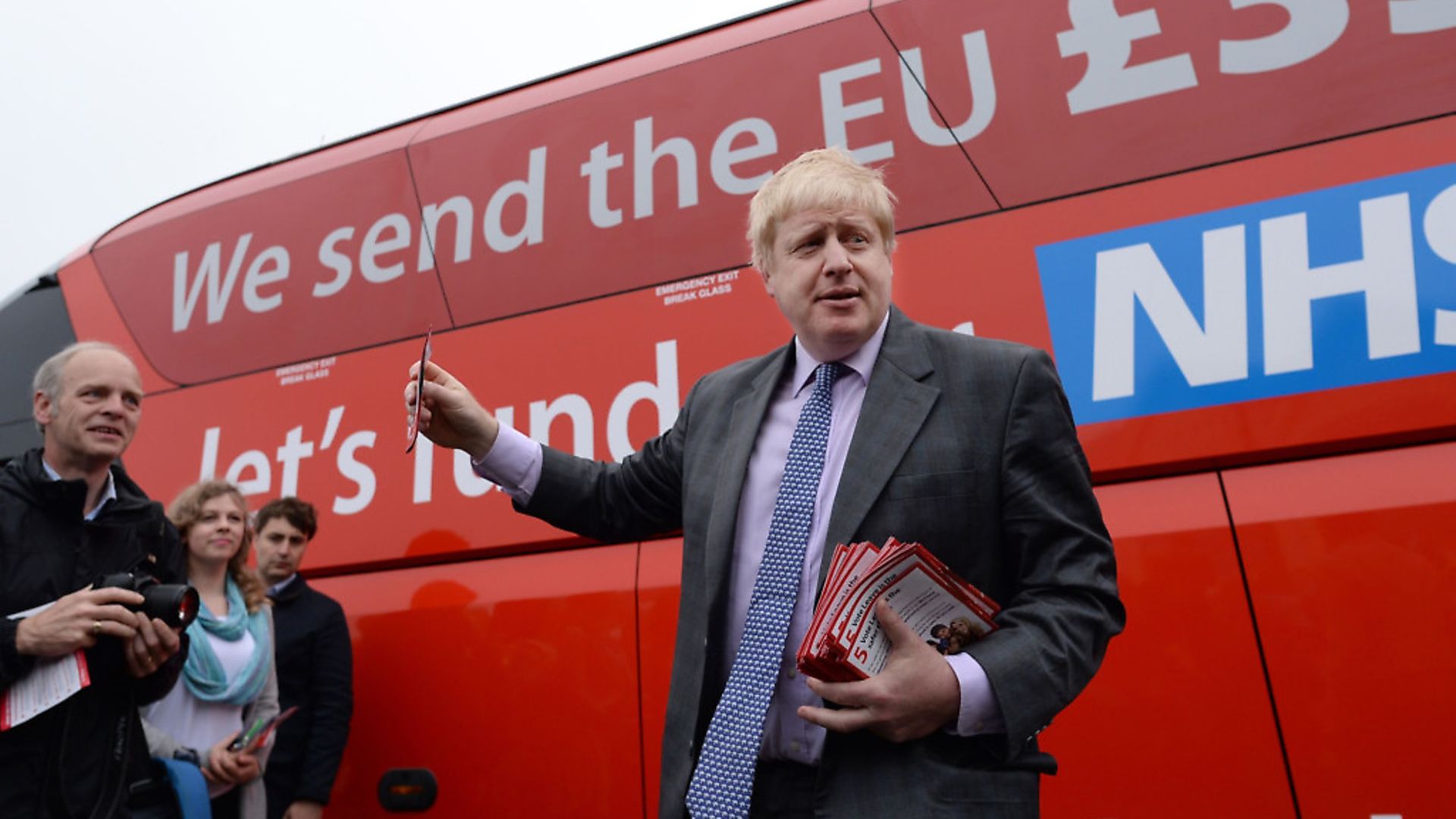
Nearly half of the public still believes the message Vote Leave plastered on the side of a bus during the referendum campaign.
A new study has found that a majority of voters (42%) believed the ‘we send the EU £350m a week – let’s fund our NHS instead’ message to still be true. Just 36% believed it to be false, while 22% were unsure.
Researchers from King’s College London have concluded despite attempts to debunk the myths behind the message, it has had little impact on those that still believe in the figures.
Polling – carried out by Ipsos MORI – found that Conservative voters and pro-Brexit voters were the most susceptible to the £350m line. It found that 54% of Tory voters and 61% of Leave voters believed the claim compared with 33% of Labour voters and 22% of Lib Dem voters – and 23% of Remain voters.
MORE: Brexit could wipe out our supply of toilet paper
Vote Leave’s Dominic Cummings said after the Brexit vote he believed that Leave would not have won the EU referendum without the NHS claims.
He said: ‘It was clearly the most effective argument not only with the crucial swing fifth but with almost every demographic’.
The use of the claim during the referendum campaign led to Sir Andrew Dilnot, chair of the UK Statistics Authority, rebuking prominent Vote Leave campaigners.
In September The New European revealed that a private prosecution case is set to be lodged against the former foreign secretary Boris Johnson for the £350m lie.
Commenting on the findings of the latest report Professor Bobby Duffy, from King’s College London, told the Independent: ‘These misperceptions raise important questions about the basis of our decision-making – but as I point out in our work on misperceptions, it’s not as simple as people just changing their minds if they had the correct facts – it’s more emotional than that.
MORE: Alastair Campbell on why the time for action has only just begun
‘But it’s a very clear sign of how difficult it will be to bring the country together – the fact that different groups see the same realities so differently shows how divided we are.’
Warning: Illegal string offset 'link_id' in /mnt/storage/stage/www/wp-includes/bookmark.php on line 357
Notice: Trying to get property 'link_id' of non-object in /mnt/storage/stage/www/wp-includes/bookmark.php on line 37






